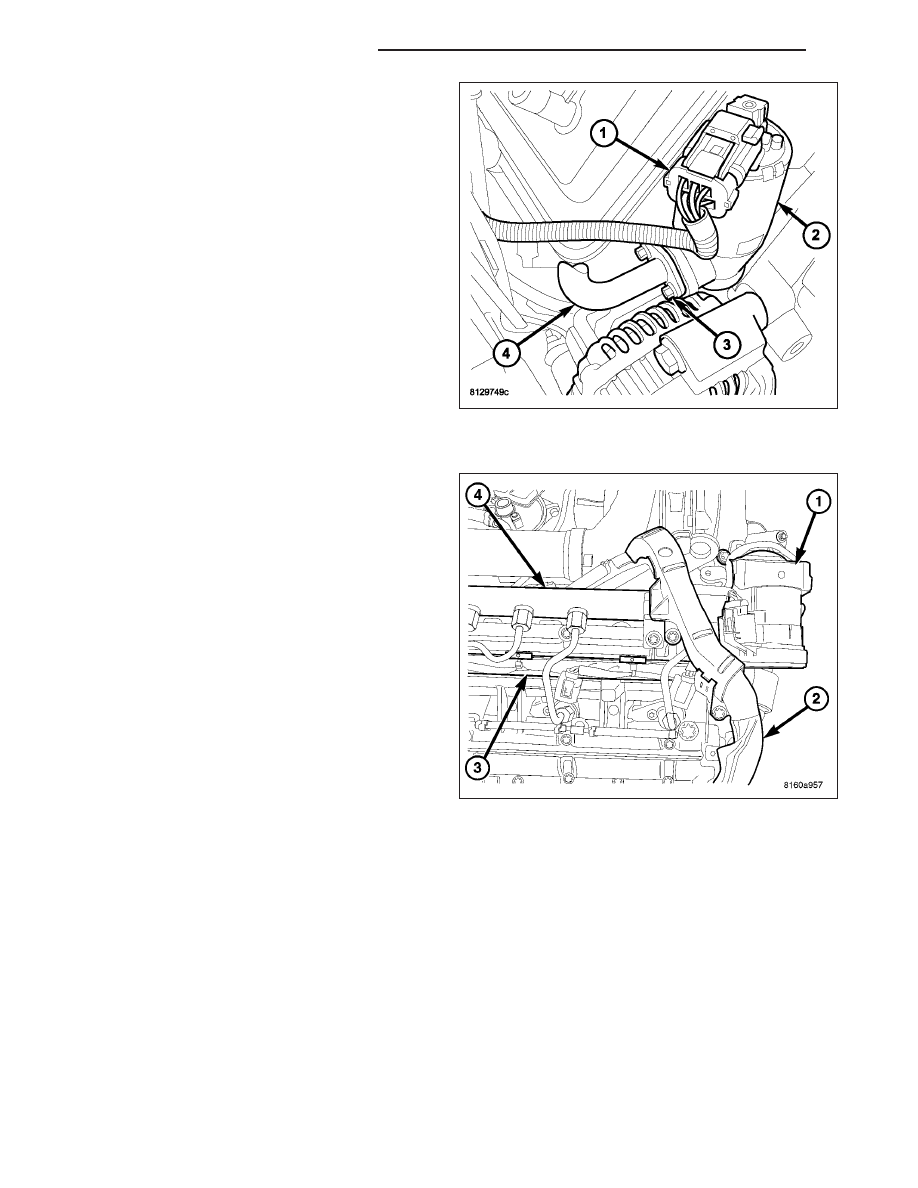Chrysler 300/300 Touring/300C, Dodge Magnum. Manual - part 2375

3. Clean EGR tube where it joins EGR valve.
4. Position new gasket between EGR tube flange and
EGR valve assembly.
5. Install two bolts (3) connecting EGR tube (4) to
valve assembly (2). Tighten bolts. Refer to Torque
Specifications.
6. Connect electrical connector (1) to EGR solenoid
(2).
3.0L - DIESEL
1. Clean EGR valve sealing surfaces.
2. Lubricate the seal and install the EGR valve in
intake manifold. Tighten EGR valve retaining bolts
to 9 N·m (80 lbs.in).
3. Connect the EGR valve wiring harness connector.
4. Install engine cover. (Refer to 9 - ENGINE -
INSTALLATION)
5. Connect the negative battery cable. (Refer to 8 -
ELECTRICAL/BATTERY
SYSTEM/CABLES
-
INSTALLATION)
25 - 58
EXHAUST GAS RECIRCULATION
LX